Decrease a Stitch in Knitting
Learning to decrease a stitch in knitting usually happens when making a jumper with a front, back and sleeves, after casting off some stitches for the arm hole the shoulder need to be shaped.
This will depend what type of sleeve is being knitted. A set in sleeve does not require as much decreasing as a raglan shoulder seam does. The raglan shaping reduces the number of stitches from body width to neck width.
The pattern will indicate how the shaping should be done, sometimes it is done for every row, every alternate row or every few rows.
There are a couple of ways to achieve this the first is usually done at the beginning of a knit row with the other being decreased at the end of a row.
When knitting an item from a pattern this will state what way the decreasing should be done in order to get the item shaped in the way the pattern indicates.
On a sleeve the decreasing will be done at both ends of the row. When decreasing for a neck opening then this will happen in the middle of the row
Decrease a stitch in Knitting - The Steps
Decreasing at the beginning of a row.
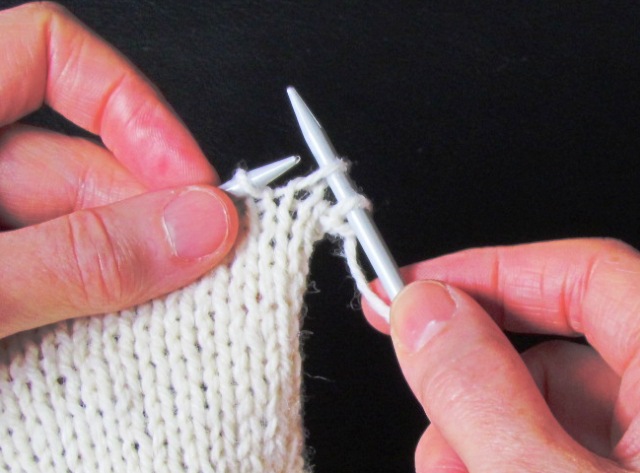 Knit first stitch, slip the next stitch.
Knit first stitch, slip the next stitch.At the beginning of a row knit one stitch then slip the second stitch onto the needle without knitting it, then knit a third stitch.
When looking at the back of the work the yarn has been taken across the stitch that is going to be decreased.
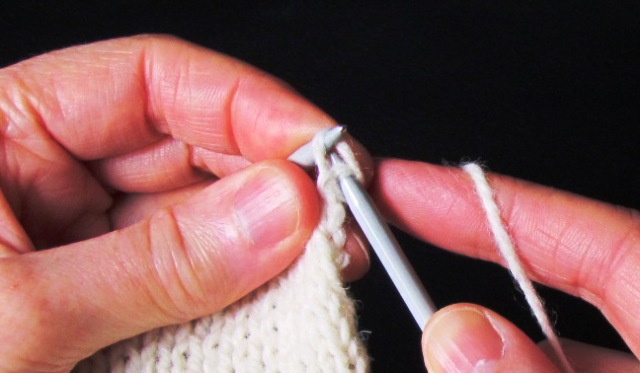 Pass the slipped stitch over the third stitch.
Pass the slipped stitch over the third stitch.The second stitch, that was slipped onto the other needle without being knitted, is now brought or passed over the third stitch therefore reducing the number of stitches on the needle.
The passing over of the slipped stitch secures it from unravelling. Continue knitting along the rest of the row.
Decreasing at the end of a row.
A second way of decreasing is done at the end of a knit row to ensure the decreasing goes in the right direction and looks neat.
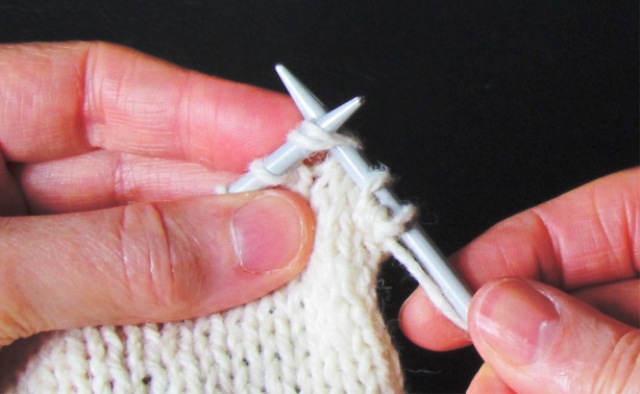 Knit two stitches together.
Knit two stitches together.Here instead of slipping a stitch and then passing it over, two stitches are knitted together.
Begin to knit a stitch but instead of using one stitch, place the needle into two loops of the first needle and then knit as usual.
This way the two stitches are turned into one stitch, again the stitches are decreased.
The pattern will explain the way to decrease stitches so the item is made to represent the pattern.
How the decreasing will look on a garment.
When you decrease a stitch in knitting it will give a slight pattern on the garment and will show up when the garment is knitted together.
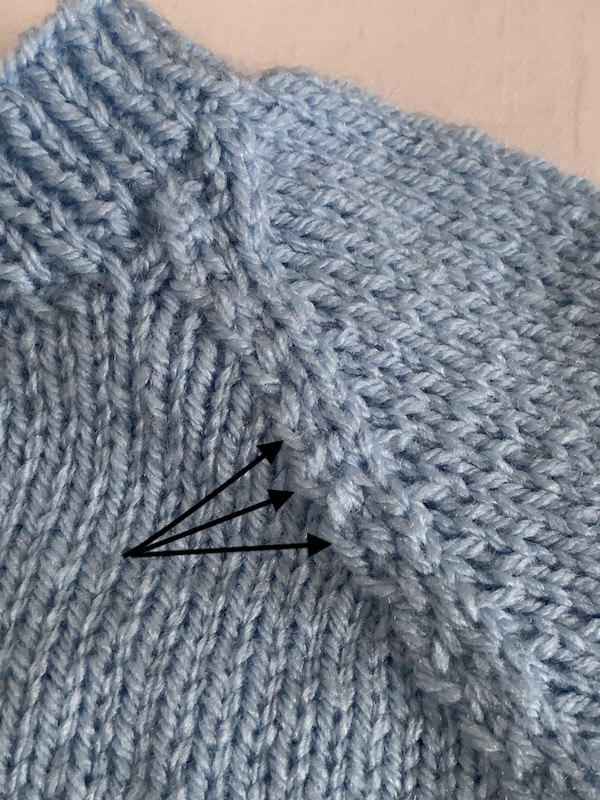 Decrease at start of row
Decrease at start of row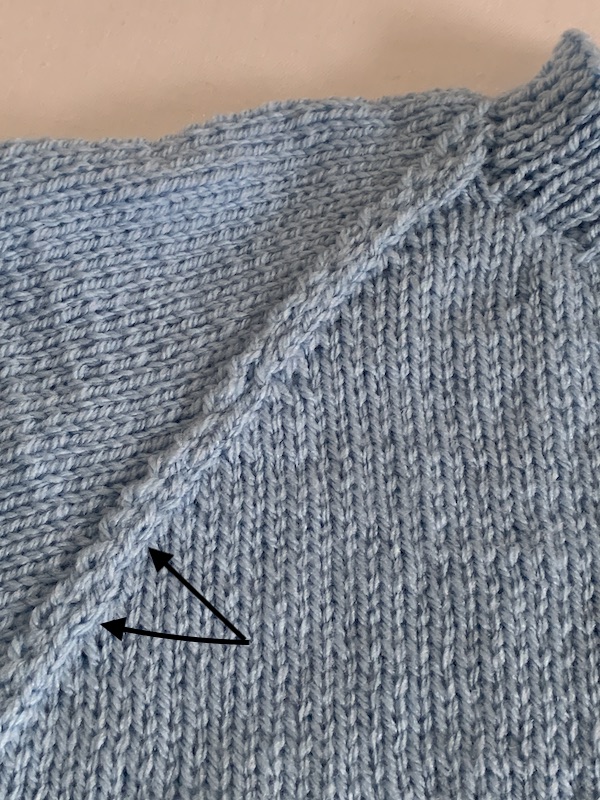 Decrease at end of row
Decrease at end of rowIn the pictures above this shows a garment that has been completed and the front, sleeve and back pieces sewn together.
The arrows indicate where the decreasing has been done but it is difficult to find. At the start the start of the row it is a passed slipped stitch over and at the end of the row it is a knit two together.
Decreasing right at the start or finish of a row.
Sometimes the decreasing is done at the very start or the very end of the row. This is so there is not a defined line of decreasing.
This would be when knitting squares for blankets diagonally or sometimes on garments.
The blanket squares don't need to have a deceasing mark so will start and end with a knit two together when decreasing the stitches.
This is also important if decreasing right at the start of a cable pattern so the pattern is not interrupted and it keeps correct.
Decreasing more than one stitch.
When the decreasing has to be done in a shorter row distance, the pattern may indicate that more than one stitch is needed to be deceased.
At the start of the row the pattern may say knit one, slip one then knit two together and pass over the slipped stitch. In this way two stitches are decreased. One when the slipped stitch is passed over and another when two stitches are knitted together.
At the end of a row the pattern may say to knit three stitches together and this way there will be a decrease of two stitches as three stitches becomes one.
The Abbreviations for deceasing stitches
When reading patterns the knitting abbreviations may be:
K1, sl1, k1, psso, knit to end of row.
This means the the first stitch knitted as a knit stitch, the second is slipped onto the other needle, the third stitch is knitted as a knit stitch then the slipped stitch is passed over the the third stitch, continue knitting to end of row.
dec 1 stitch each end of row.
This means that the pattern wants a stitch decreased at each end of the row.
k2tog
This means to knit two stitches together to get one stitch.
k1, sl1, k2tog, psso, knit to end of row.
This means that two stitches are to be decreased one as the slipped stitch is passed over the knit two together and the other in the knit two together.
Enjoy decreasing a stitch in knitting.
- Home
- Knitting for Beginners
- Decrease a Stitch in Knitting
Affiliate offers
Please take care with any soft furnishing that it does not come into contact with any heat source.
If you have found an error on this page or want some more information on sewing cushions.
Please contact me . Thank you
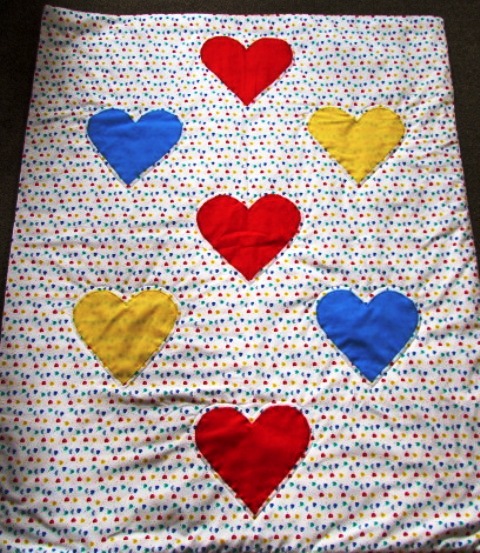
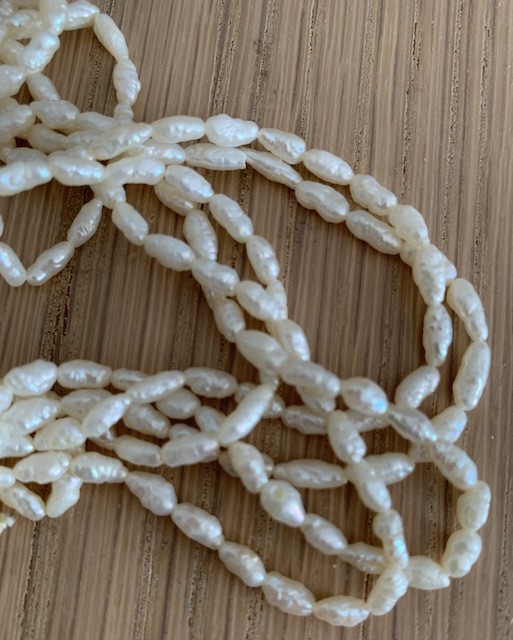
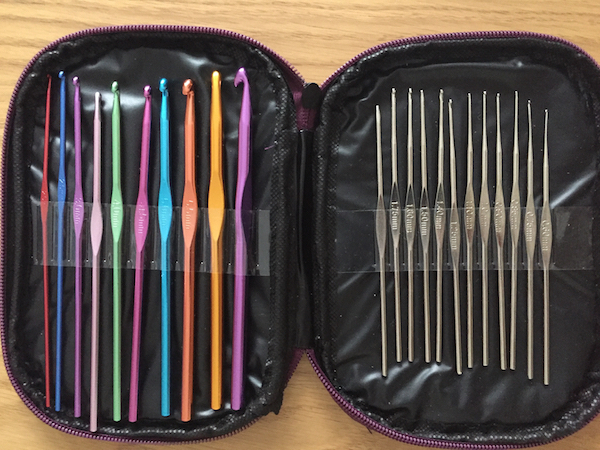
New! Comments
Have your say about what you just read! Leave me a comment in the box below.